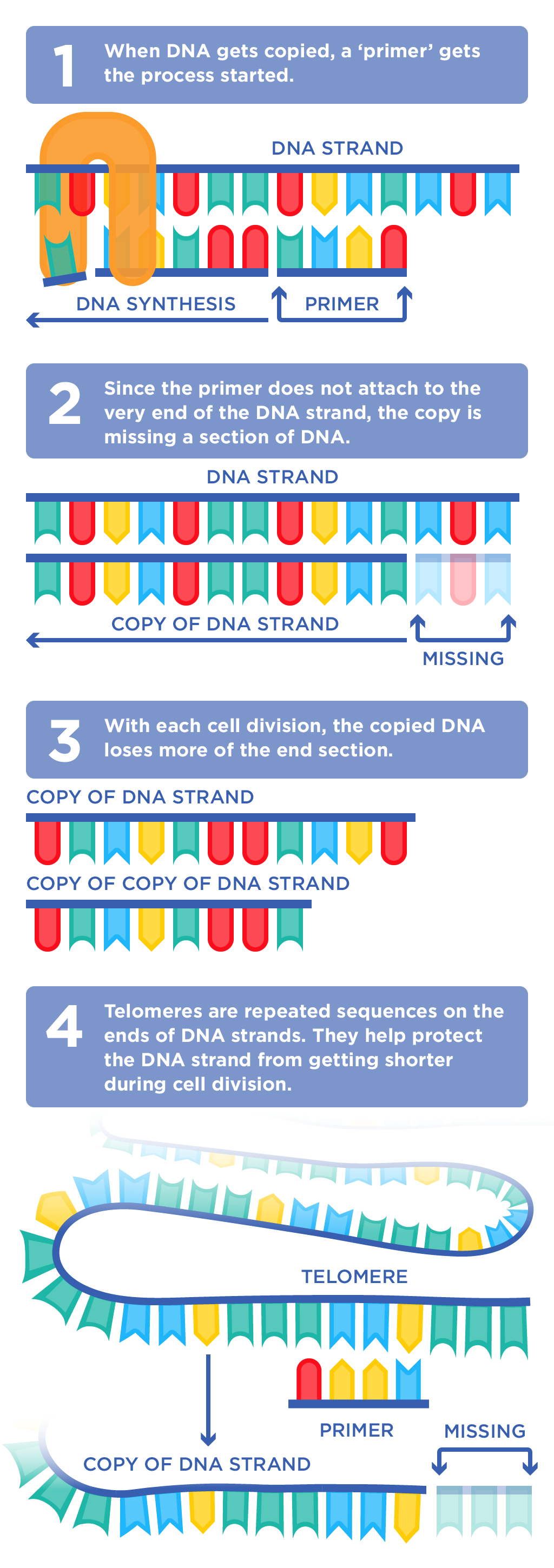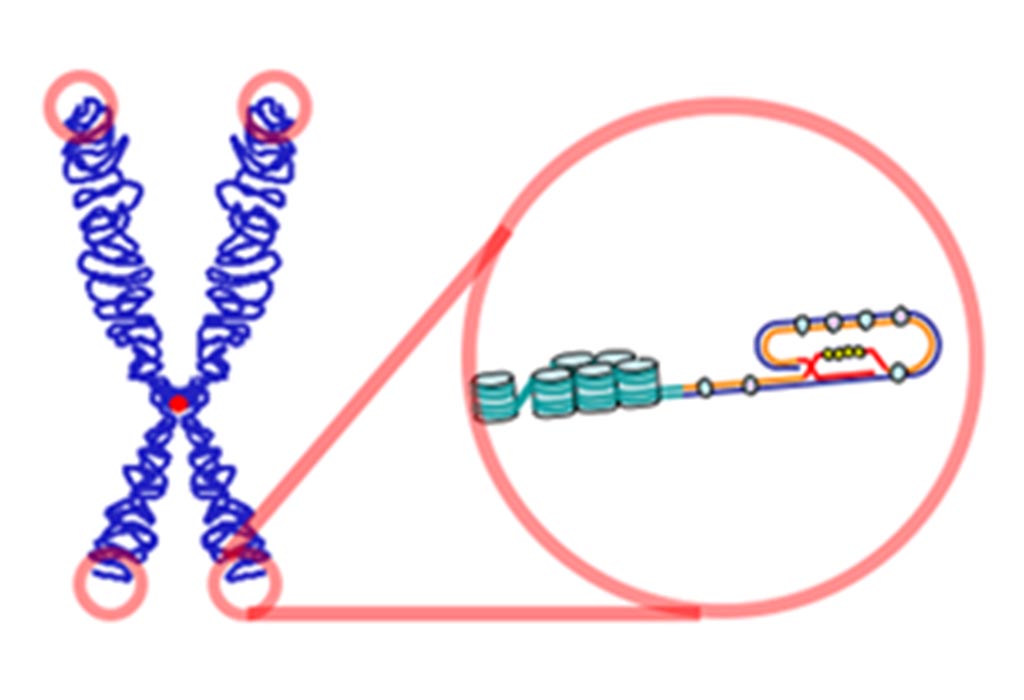What are telomeres?
Getting older is a part of life. Understanding why we age, or what causes ageing, is a puzzle that scientists are still trying to solve. Theories abound: is it oxidative stress damaging our DNA? Is glucose to blame? Are our cells just following a pre-programmed biological timetable regardless of any other factors? Most likely it’s a combination of all of these, plus some other causes we haven’t yet discovered.
One theory suggests that the ageing process is at least partly linked to our telomeres. These are little protective caps at the ends of the DNA molecules that make up our chromosomes. Their job is to stop the ends of chromosomes from fraying or sticking to each other, much like the plastic tips on the ends of shoelaces.

Telomeres also play an important role in making sure our DNA gets copied properly when cells divide. Thanks to a quirk of the DNA replication machinery, a few nucleotides (the building blocks of DNA) at the very end of the strand don’t make it into the new DNA copy, leading to the loss of some genetic information—like a photocopier cutting off the last line of text on a page. DNA strands get shorter and shorter with every cell division.

So, how do our cells have any DNA left at all? Enter telomeres. Telomeres consist of the same sequence of six nucleotides repeated over and over again, and all this repetition makes them somewhat disposable. They protect the rest of the DNA, as they can gradually get shorter and shorter over time without the loss of any other important genetic information.
In egg and sperm cells, an enzyme called telomerase keeps adding more of the repeating sequence onto the end of DNA strands, so that the telomeres in these cells don’t shorten. In other cells, telomerase is less active, leading to the gradual shortening of telomeres over time.
This shortening is thought to be one of several factors that causes cells to age. A cell can no longer divide when telomeres are too short—once they reach a critical point, the cell becomes inactive (or ‘senescent’), slowly accumulating damage that it can’t repair, or it dies. This cell division limit is called the Hayflick Limit, after researcher Leonard Hayflick found that normal human cells divide roughly 50 times before stopping.
A too-short telomere sends a signal out to the rest of the cell that there is a problem with the DNA. Problematic DNA needs to be repaired rather than continuously copied, so it’s important for broken DNA to be flagged and dealt with quickly by cellular repair mechanisms. In this sense, telomeres also play a critical role in preventing cancer, which is uncontrolled cell division. This is why we can’t just keep extending the lives of our cells by boosting telomere regeneration with more telomere-producing telomerase: our inbuilt cancer prevention systems would be compromised.

As it turns out, it’s not just telomere length that matters, but the telomere shape and structure too. Healthy telomeres form neat little paperclip-shaped loops at the ends of chromosomes, so the end is tucked away and safely protected. If you have ever tried forming a loop or a knot with a piece of string, you will know that as the piece of string gets shorter and shorter, forming it into a loop gets more and more difficult. It’s the same with telomeres.
When this loop unfolds, the end is exposed, which sounds the alarm to indicate the presence of broken DNA. Cell division stops and the cell may become senescent, at which point it can no longer respond properly to damage from other sources. The slow deterioration of function that follows is part of the ageing process.

Does this mean lengthy, healthy telomeres are the key to a longer life? We still have a lot to learn before we can answer that question. We can’t yet say for sure whether telomere shortening is a direct cause of ageing, or just an outward indicator that we’re getting old. However, we do know that some lifestyle choices (such as smoking or UV light exposure, among other things) can speed up the degradation of our telomeres, so it’s wise for us to take action to slow that process down.
Our cells are incredibly complex machines—let’s take care of them.





